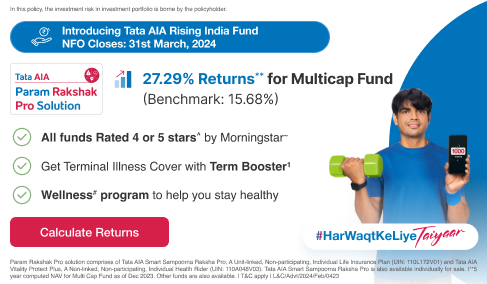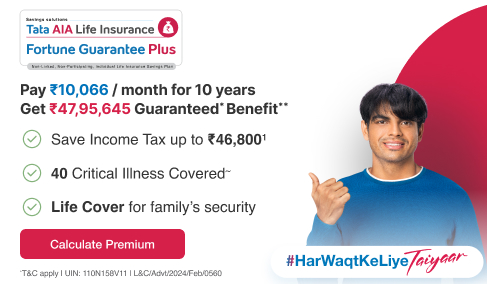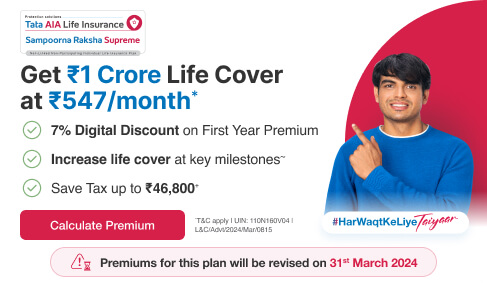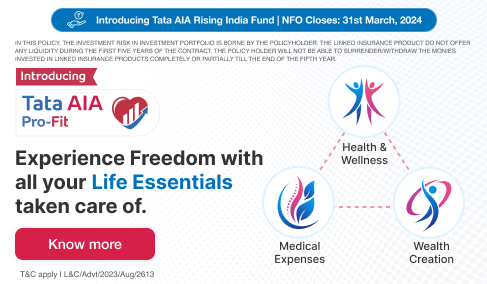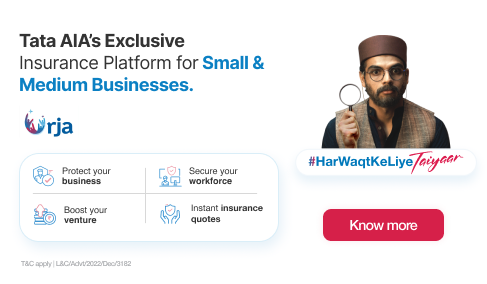Which are the Best Tax Saving Instruments in India?
We all work tirelessly and endure several fluctuations in our work life to ensure a comfortable living for ourselves as well as our loved ones. In our journey towards progressive wealth creation, it becomes crucial to plan finances to sustain over unforeseeable circumstances and achieve personal financial goals. By reducing tax liabilities, not only an individuals can reduce their financial burden but also avail benefits to secure their future permitting greater control of the money earned. Considering this, every individual, whether they are just starting with their career or are progressively climbing up the ladder, will be faced with two pertinent questions that are:
- How can I reduce my taxable income?
- What is the maximum tax I can save?
To answer the above questions, it is important to invest in tax-saving instruments right from the beginning, not to be overburdened at the end of the financial year. The Indian Income Tax Act, 1961 hosts a Section 80C permitting taxpayers across the country to deduct from their gross income of up to ₹1.5 Lakh per annum on eligible investments and specified expenses. It is important to not only know the various kinds of tax-saving instruments but to identify and link them to your personal financial goals. For ease of understanding and to help you analyse, which is the best investment option for tax-saving, we have detailed out Section 80C of the Indian Income Tax Act.
How to Lower Your Taxable Income with Section 80C?
1. Life Insurance
Life is defined by its moments of uncertainties, and life insurance allows you to prepare for these events by ensuring a financially secure future for your loved ones. Under Section 80C and 10D of the Income Tax Act, purchasing life insurance has tax benefits that can be availed by the insurer.
The premiums paid towards a life insurance policy qualify for a deduction up to ₹1.5 Lakh. Moreover, the sum guaranteed upon the maturity of the policy is also exempt from tax as is the death benefit, should the policy come into action.
In case you are on the lookout for an affordable health care policy, purchasing term life insurance presents itself as a reasonable option that secures you financially for the duration of the term. Check out the wide range of Protection Plans from Tata AIA for affordable and feature-rich term insurance plans.
2. Savings + Insurance Plans
Tata AIA has gone a step further by acknowledging that a sound financial plan is one that combines insurance with other aspirations. With a range of services under its Savings Solutions, Tata AIA helps combine specific needs like saving for marriage, a house, retirement and other financial goals with insurance for wholesome financial wellbeing. You can choose from a range of Savings Plans that guarantee a specific income or return after a certain period of time, along with comprehensive whole life cover.
3. Unit Linked Insurance Plan (ULIP)
ULIP is best suited for those who are looking for a long-term financial plan of wealth creation paired with insurance. A certain amount of the money you invest, secures your life, whereas the other portion is invested in the market. The risk of investment is borne by the capital holder, and so the investor ought to weigh their risks and judge the future needs for funds. It is most suited for investors who like to keep a close watch on their investments, have a varying risk profile, and are looking for a long-term investment horizon.
Tata AIA Life Insurance offers a range of Unit Linked Life Insurance Savings plan that focuses on steady wealth creation and can be customised to address your desired financial goals. It is a hybrid between insurance and investment, ensuring the best of both worlds.
4. National Pension Scheme (NPS)
The NPS is a contribution-based retirement saving scheme that can be availed by both salaried as well as self-employed individuals. Investment in the NPS of up to ₹1.5 Lakh qualifies for an income tax deduction. The NPS also allows for two investment choices:
- Active investment choice: Allows the investor to decide where to invest. There are three options to choose from. The first one is Asset Class E which is investing 50 per cent in stocks. Asset Class C invests in fixed income other than government securities, and lastly, Asset Class G is only investing in government securities. An individual could either choose one or can select a combination of these to invest their funds in.
- Auto choice or lifecycle fund: With this, the money is automatically invested considering the age of the subscriber
As this is a pension scheme, at the age of 60, of the accumulated corpus 40 per cent is exempted from tax; however, the rest is taxable unless invested in purchasing an annuity pension plan from a PFRDA-listed insurance company. You are also permitted a withdrawal of up to 25 per cent before the age of 60 for specific expenses such as marriage, higher education of children, medical treatments, etc.
5. Public Provident Fund (PPF)
One of the most popular government-backed schemes in India, PPF is opted for by individuals who are looking for a long-term investment plan. The PPF owes its popularity to its favourable tax-saving status as the contributions, interest earned as well as the maturity proceeds are eligible for a tax deduction. The minimum investment required to avail of this scheme is ₹500, and the maximum is ₹1.5 Lakh per financial year. The money invested in this scheme is subject to a five-year lock-in period and earns an interest of 7.9% per annum. This is the best kind of investment for conservative and low-risk investors.
6. National Saving Certificate (NSC)
A fixed-income investment scheme, the NSC is a savings bond and can be subscribed at the post office. It is a low-risk investment initiative by the Government of India and has a fixed maturity period of five years. The NSC offers a guaranteed interest and complete capital protection. The minimum investment requirement is ₹100, and the interest accrued yearly is reinvested on behalf of the investor and qualifies for a deduction under Section 80C. One thing to keep in mind is that as the fifth year’s interest is not reinvested, it cannot be claimed for a tax deduction. The last year’s interest income is added to the investor’s income and is taxed accordingly.
7. Equity Linked Saving Scheme (ELSS)
This is a mutual fund scheme investing in equity and equity-related instruments to generate high returns. The scheme comes with a statutory lock-in period of three years. As the underlying assets are equity securities, the investor needs to have a high-risk profile. It has been observed, however, that this scheme provides a high capital growth opportunity in the longer run.
Beyond Section 80C
If you are still looking for tax-saving investment avenues, there are several tax-saving instruments other than 80C to look out for.
- Over and above the aforementioned deductions, paying health insurance premiums under section 80D permits for a deduction of up to ₹25,000.
- Additionally, you can also claim for a tax deduction on your house rent allowance or get a deduction on the interest on your home loan as also for repayment of an educational loan.
- Keeping money in your savings account also allows for a tax deduction under the section 80TTB for an interest of up to ₹10,000 per year.
- Donations made to government-approved charitable institutions are also exempted from tax.
To conclude, although tax saving is a priority, most financial experts agree that it should be paired with a long-term financial goal. This ascertains that while you are saving on taxes, you are also focused on wealth creation. Efficient financial planning begins at the start of the financial year and not at its conclusion.
Tata AIA life insurance aims to guide you every step of the way to secure your financial future so you can enjoy the golden years of your life in a worry-free manner.
L&C/Advt/2021/Mar/0307


 FOR EXISTING POLICY
FOR EXISTING POLICY
 FOR NEW POLICY
FOR NEW POLICY

